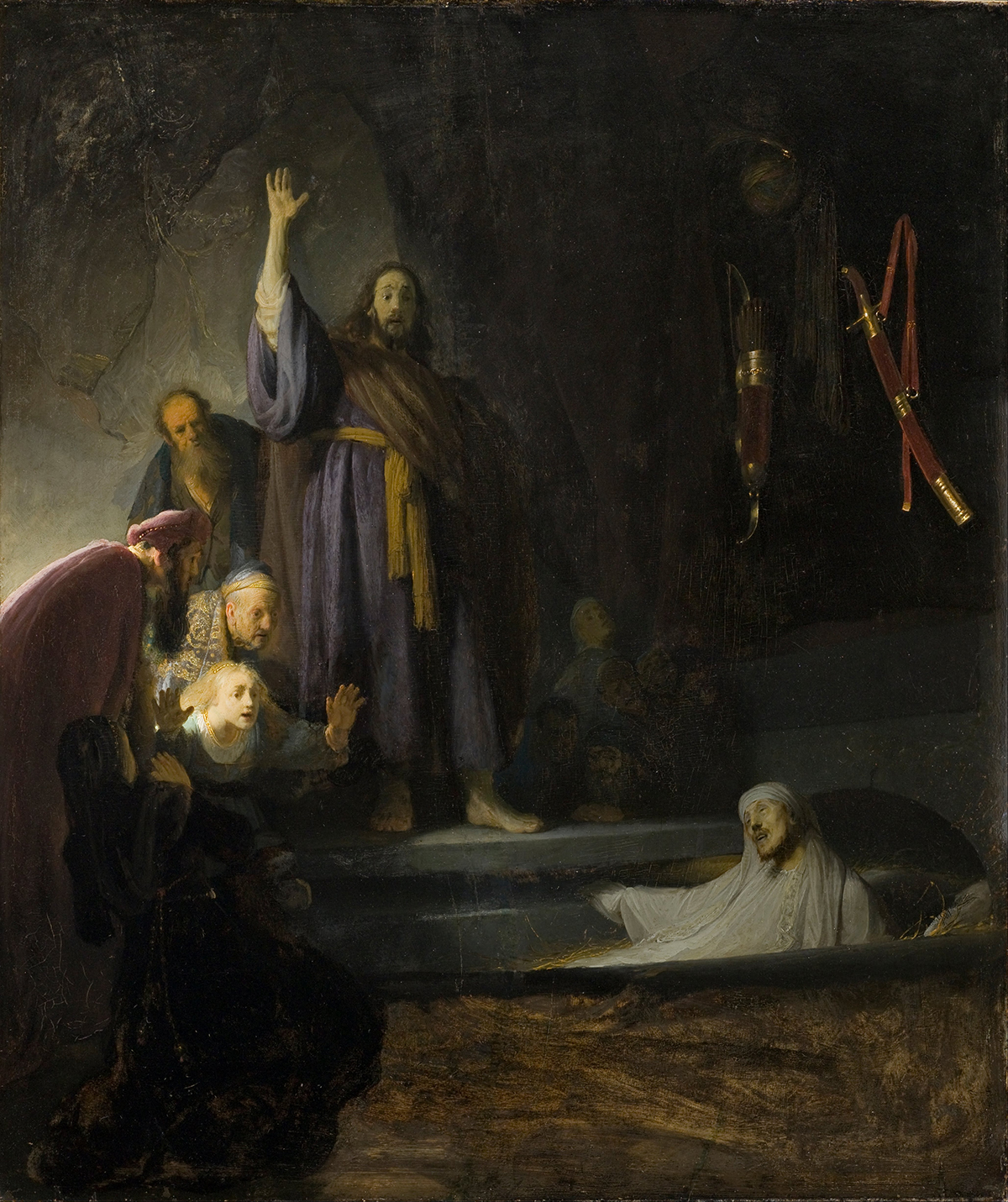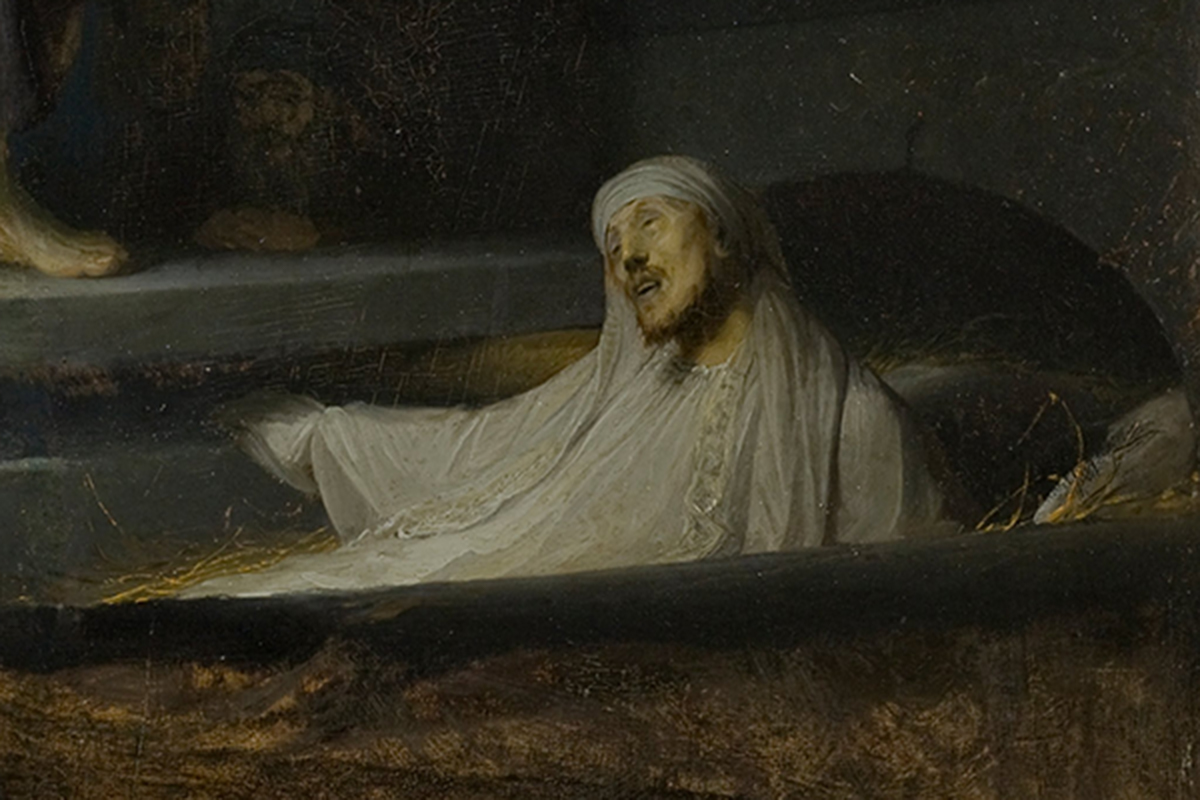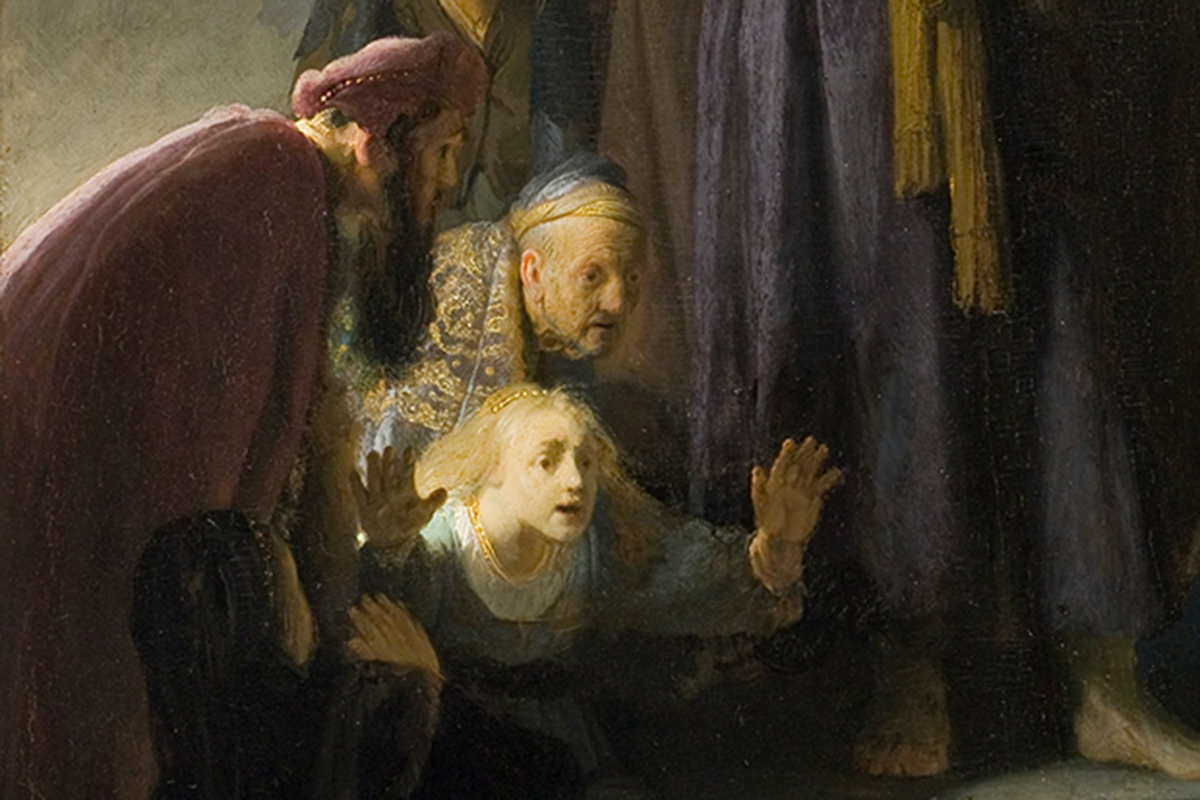A Meditation on the Gospel of the 5th Sunday of Lent.Rembrandt painted this canvas in about 1630 when he was 24. He fought tooth and nail to hang onto this youthful masterpiece until he was finally forced to sell it in 1656 to clear his debts. For what he represented here was the salvation he hoped for after the harrowing despair he was so often to face: the appalling, incomprehensible deaths of one loved one after another, until there were none.

The ultimate goal of the power of evil is to put love to death
And then Rembrandt had the gift of compassion, not arising from any sentimentality on his part, but from a willed imitation of Christ offering the greatest proof of love. He was convinced of this truth: that the ultimate goal of the power of evil is to put love to death. And it has the means to do so.
For in its malevolent design, evil assuredly and tragically triumphs over all man’s efforts to bring love alive and sustain it even to our own Calvary. Except for this one man, whom the Gospel of John describes as the most human of men, the close friend of Lazarus, Martha, and Mary; maybe an all-too-human man who cried salty tears over his friend: See how he loved him! the people exclaimed. A man so human he weeps before the pain of those who remain behind—a pain Rembrandt knew only too well after watching his mother, his father, his children, his wife, and his friends horribly crushed by illness before being snatched up by the jaws of death. Yes, the power of evil always triumphs—except that this man who weeps, suddenly says: I am the resurrection and the life; whoever believes in me, even if he dies, will live. And Rembrandt, who had lost so many loved ones, believes in him.

Love routs evil more powerfully than suffering suffuses the flesh
Most significant in this canvas is the play of chiaroscuro: the light that rends the shadows, the love that routs evil more powerfully than suffering suffuses the flesh, life that ultimately triumphs over death. An intense ray of light flowing from the center left casts an oblique beam into the midst of the scene before striking the tomb of Lazarus. Those present at the miracle—the backlit Martha, Mary in full light, and the Jewish dignitaries—are spellbound. The figure of the Lord forms the vertical axis dividing the composition: a Jesus of human visage, still grief-stricken, but a Christ of superhuman stature. Twice the height of the other figures, his right hand masterfully raised, with the power of God he commands his friend to rise.

For, if the dead are not raised, we are but pitiable people, as Saint Paul says (1 Cor 15:14); but, from Bethany to Emmaus, Rembrandt illustrates that our faith is not vain.
Published by Magnificat.
The Raising of Lazarus (v. 1630–1632), Rembrandt (1606-1669), Los Angeles County Museum of Art, CA, USA. © akg-images / Album.








